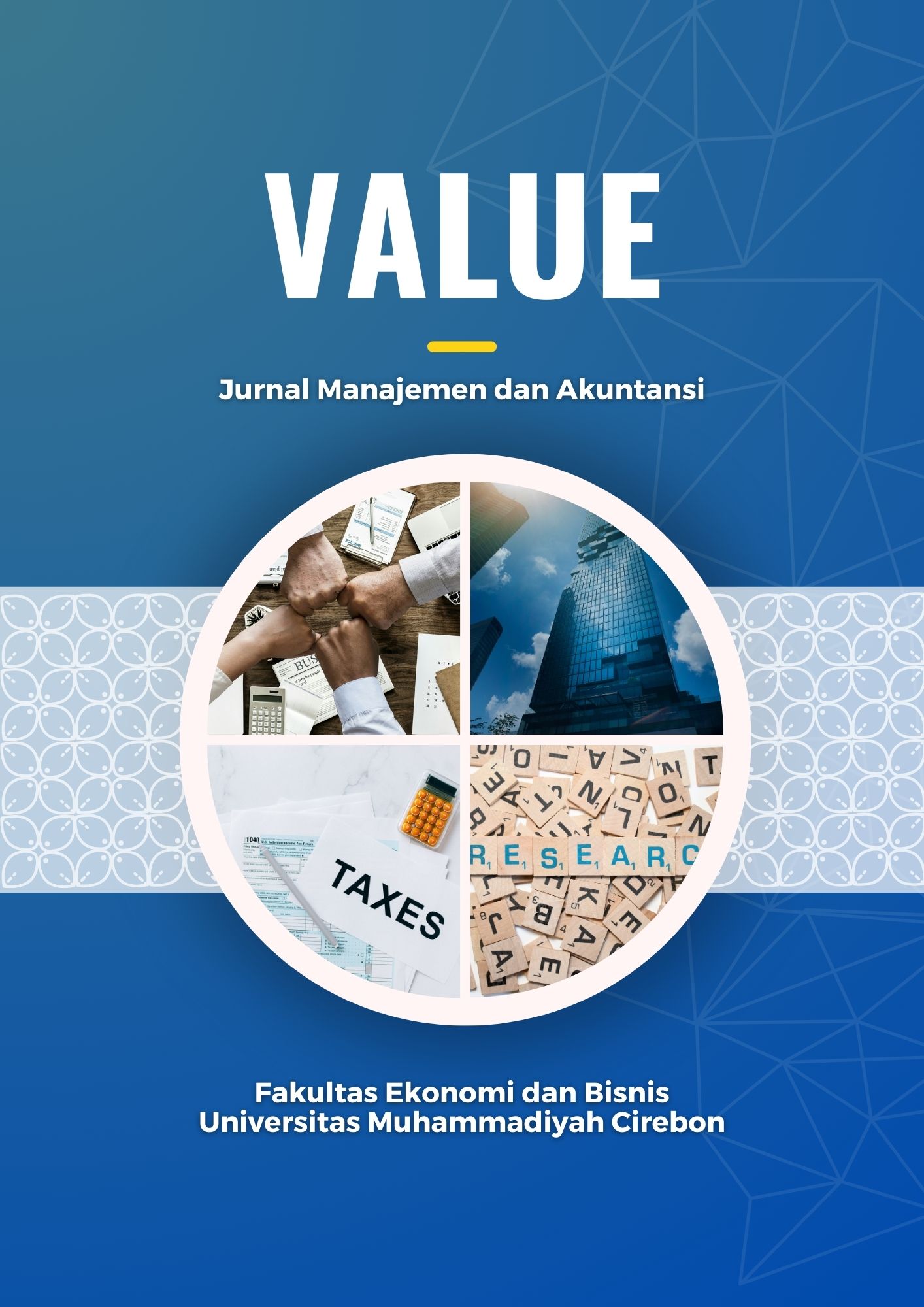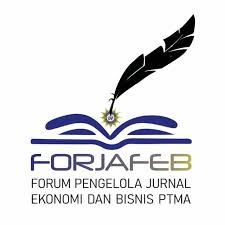Work-Life Balance, Kepuasan Kerja, Dan Kinerja: Peran Moderasi Family Supportive Supervisor Behaviors
DOI:
https://doi.org/10.32534/jv.v20i2.7191Keywords:
Work-Life Balance, Job Satisfaction, Performance, Family Supportive Supervisor Behaviors, StudentAbstract
Students who study while working have to balance their personal life, career, and studies. This research tests and analyzes the relationship between work-life balance, job satisfaction, and performance, moderated by Family Supportive Supervisor Behaviors. The method used in this research is quantitative method by distributing questionnaires to respondents. The sample of this research is 150 undergraduate students who study while working in the Special Region of Yogyakarta. Data analysis in this study used a Structural Equation Model (SEM) using Partial Least Square (PLS). The results of this study indicate that work-life balance has a significant positive effect on job satisfaction and student performance. Job satisfaction is also proven to have a significant positive effect on student performance. However, job satisfaction is proven not to mediate the effect of work-life balance on student performance. In addition, Family Supportive Supervisor Behaviors proved not to strengthen the influence of work-life balance on student performance.
References
Aruldoss, A., Berube Kowalski, K., Travis, M. L., & Parayitam, S. (2022). The relationship between work–life balance and job satisfaction: moderating role of training and development and work environment. In Journal of Advances in Management Research (Vol. 19, Issue 2). https://doi.org/10.1108/JAMR-01-2021-0002
Bhise, P., & Dadas, A. (2022). Impact of Work Life Balance on Job Satisfaction and Employee Turnover in IT sector. NeuroQuantology, 20(20), 346–360. https://doi.org/10.48047/NQ.2022.20.20.NQ109038
Bosch, M. J., Heras, M. Las, Russo, M., Rofcanin, Y., & Grau i Grau, M. (2018). How context matters: The relationship between family supportive supervisor behaviours and motivation to work moderated by gender inequality. Journal of Business Research, 82(August 2017), 46–55. https://doi.org/10.1016/j.jbusres.2017.08.026
Bouwmeester, O., Atkinson, R., Noury, L., & Ruotsalainen, R. (2021). Work-life balance policies in high performance organisations: A comparative interview study with millennials in Dutch consultancies. German Journal of Human Resource Management, 35(1), 6–32. https://doi.org/10.1177/2397002220952738
Cranny, C. J., Smith, P. C., & Stone, E. (1992). Job satisfcaction: How people feel about the Personal Psychology. 365–472.
Creswell, J. W., & Poth, C. N. (2018). Qualitative Inquiry and Research Design. In Nucl. Phys. (Vol. 13, Issue 1). SAGE Publications.
Dalila, A., & Hadi, H. K. (2024). Pengaruh work-life balance terhadap job performance dengan job satisfaction sebagai variabel intervening. Jurnal Ilmu Manajemen, 12, 524–536.
Daulay, S. F., & Rola, F. (2023). Perbedaan Self-Regulated Learning antara Mahasiswa yang Bekerja Dan yang Tidak Bekerja. Jurnal Psikologi, 13, 2. https://fpsi.mercubuana-yogya.ac.id/wp-content/uploads/2012/06/jurnal-fastirola.ok_.pdf
Djamba, Y. K., & Neuman, W. L. (2002). Social Research Methods: Qualitative and Quantitative Approaches. In Teaching Sociology (Vol. 30, Issue 3). https://doi.org/10.2307/3211488
Frame, P., & Hartog, M. (2003). From rhetoric to reality. Into the swamp of ethical practice: implementing work?life balance. Business Ethics: A European Review, 12(4), 358–368. https://doi.org/10.1111/1467-8608.00337
Greenhaus, J. H., Collins, K. M., & Shaw, J. D. (2003). The relation between work-family balance and quality of life. Journal of Vocational Behavior, 63(3), 510–531. https://doi.org/10.1016/S0001-8791(02)00042-8
Ha, N. M., Thanh, N., Thuy, P., & Trung, N. T. (2024). Disruptive Technology and Business Continuity. In Disruptive Technology and Business Continuity. Springer Nature Singapore. https://doi.org/10.1007/978-981-97-5452-6
Hair, J. F., Ringle, C. M., & Sarstedt, M. (2011). PLS-SEM: Indeed a silver bullet. Journal of Marketing Theory and Practice, 19(2), 139–152. https://doi.org/10.2753/MTP1069-6679190202
Hakim, A. R., & Hasmira, M. H. (2022). Strategi Kuliah Sambil Bekerja Oleh Mahasiswa (Studi Kasus: Mahasiswa Bekerja di Universitas Negeri Padang). Naradidik: Journal of Education and Pedagogy, 1(1), 30–37. https://doi.org/10.24036/nara.v1i1.6
Hammer, L. B., Kossek, E. E., Zimmerman, K., & Daniels, R. (2007). Exploring the work and non-work interface. Research in Occupational Stress and Well Being, 6, 165–204.
Hamra, N. El, & Widiasih, P. A. (2024). Gambaran Work-Life Balance Mahasiswa yang Bekerja di Sektor FnB An Overview of the Work-Life Balance Among Working Students in FnB Sector. 16(2), 110–121.
Iskandar, D., & Vidada, I. A. (2024). The Effect of Work-Life Balance and Work Environment on Employee Job Satisfaction. Golden Ratio of Data in Summary, 4(2). https://doi.org/https://doi.org/10.52970/grdis.v4i2.658
Jyoti, & Kaur, R. bir. (2024). Exploring family supportive supervisor behaviours from a police perspective to ensure life satisfaction: an empirical investigation using importance-performance analysis. Rajagiri Management Journal. https://doi.org/10.1108/ramj-10-2023-0278
Katebi, A., HajiZadeh, M. H., Bordbar, A., & Salehi, A. M. (2022). The Relationship Between “Job Satisfaction” and “Job Performance”: A Meta-analysis. Global Journal of Flexible Systems Management, 23(1), 21–42. https://doi.org/10.1007/s40171-021-00280-y
Muafi, M. (2003). Pengaruh Motivasi Spiritual Karyawan terhadap Kinerja Religius: Studi Empiris di Kawasan Industri Rungkut Surabaya (Sier). Jurnal Siasat Bisnis, 1(8), 1–18. https://doi.org/10.20885/jsb.vol1.iss8.art1
Oktafien, S., Santoso, A. B., & Azali, M. (2021). The Effect Of Work Life Balance On Improving Employee Performance. Turkish Journal of Computer and Mathematics Education, 12, 1321–1326.
Preena, G. R., & Preena, G. R. (2021). Impact of Work-Life Balance on Employee Performance an Empirical Study on a Shipping Company in Sri Lanka. International Journal on Global Business Management and Research, 10(1), 48–73. https://papers.ssrn.com/sol3/papers.cfm?abstract_id=3856506
Raharjo, S. T., & Prahara, S. A. (2022). Mahasiswa Yang Bekerja: Problem Focused Coping Dengan Academic Burnout. Jurnal Sudut Pandang (JSP), 2(12), 2798–5962.
Sapta, I. K. S., Muafi, M., & Setini, N. M. (2021). The Role of Technology, Organizational Culture, and Job Satisfaction in Improving Employee Performance during the Covid-19 Pandemic. Journal of Asian Finance, Economics and Business, 8(1), 495–505. https://doi.org/10.13106/jafeb.2021.vol8.no1.495
Srivastav, S. K., Habil, M., Thakur, P., & Kharya, M. (2024). The Dynamics of Job Satisfaction and Its Impact on Employee Performance. International Journal of Progressive Research in Engineering Management and Science, August. https://doi.org/10.58257/ijprems35668
Suryani, N. K. (2022). Kepuasan Kerja: Pengaruhnya Dalam Organisasi. Jurnal Imagine, 2(2), 71–77. https://doi.org/10.35886/imagine.v2i2.491
Susanto, P., Hoque, M. E., Jannat, T., Emely, B., Zona, M. A., & Islam, M. A. (2022). Work-Life Balance, Job Satisfaction, and Job Performance of SMEs Employees: The Moderating Role of Family-Supportive Supervisor Behaviors. Frontiers in Psychology, 13, 1–12. https://doi.org/10.3389/fpsyg.2022.906876
Talukder, A. K. M., Vickers, M., & Khan, A. (2018). Supervisor support and work-life balance: Impacts on job performance in the Australian financial sector. Personnel Review, 47(3), 727–744. https://doi.org/10.1108/PR-12-2016-0314
Udin, U. (2023). The Impact of Work-Life Balance on Employee Performance: Mediating Role of Affective Commitment and Job Satisfaction. International Journal of Sustainable Development and Planning, 18(11), 3649–3655. https://doi.org/10.18280/ijsdp.181131
Urba, M. A., & Soetjiningsih, C. H. (2022). Hubungan Antara Work Life Balance dan Stres Kerja Pada Karyawan Perusahaan. Bulletin of Counseling and Psychotherapy, 4(3). https://doi.org/10.51214/bocp.v4i3.383


















